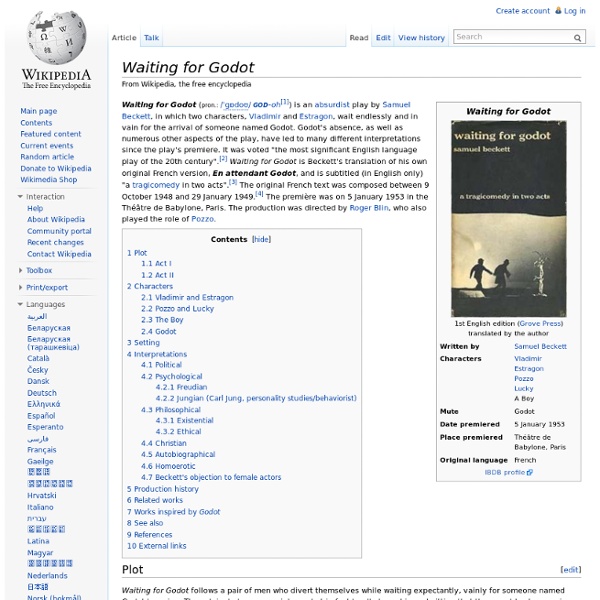The Great Gatsby
Fitzgerald—inspired by the parties he had attended while visiting Long Island's north shore—began planning the novel in 1923, desiring to produce, in his words, "something new—something extraordinary and beautiful and simple and intricately patterned."[3] Progress was slow, with Fitzgerald completing his first draft following a move to the French Riviera in 1924. His editor, Maxwell Perkins, felt the book was too vague and convinced the author to revise over the next winter. Fitzgerald was ambivalent about the book's title, at various times wishing to re-title the novel Trimalchio in West Egg. First published by Scribner's in April 1925, The Great Gatsby received mixed reviews and sold poorly; in its first year, the book sold only 20,000 copies. Historical context[edit] Set on the prosperous Long Island of 1922, The Great Gatsby provides a critical social history of America during the Roaring Twenties within its narrative. Plot summary[edit] Major characters[edit] Cover art[edit]
Nineteen Eighty-Four
History and title[edit] A 1947 draft manuscript of the first page of Nineteen Eighty-Four, showing the editorial development. The Last Man in Europe was an early title for the novel but in a letter dated 22 October 1948 to his publisher Fredric Warburg, eight months before publication, Orwell wrote about hesitating between The Last Man in Europe and Nineteen Eighty-Four.[14] Warburg suggested changing the main title to a more commercial one.[15] Copyright status[edit] The novel will be in the public domain in the European Union and Russia in 2021 and in the United States in 2044.[21] It is already in the public domain in Canada;[22] South Africa,[23] Argentina[24] Australia,[25] and Oman.[26] Background[edit] The banner of the Party in the 1984 film adaptation of the book (I) the upper-class Inner Party, the elite ruling minority, who make up 2% of the population. As the government, the Party controls the population with four ministries: Plot[edit] Characters[edit] Principal characters[edit]
Brave New World
Classic 1932 science fiction novel by Aldous Huxley In 1999, the Modern Library ranked Brave New World as #5 on its list of the 100 best English-language novels of the 20th century.[2] In 2003, Robert McCrum, writing for The Observer, included Brave New World chronologically at #53 in "the top 100 greatest novels of all time",[3] and the novel was listed at #87 on The Big Read survey by the BBC.[4] Title[edit] O wonder! Translations of the title often allude to similar expressions used in domestic works of literature: the French edition of the work is entitled Le Meilleur des mondes (The Best of All Worlds), an allusion to an expression used by the philosopher Gottfried Leibniz[7] and satirised in Candide, Ou l'Optimisme by Voltaire (1759). History[edit] Huxley said that Brave New World was inspired by the utopian novels of H. Plot[edit] Characters[edit] Bernard Marx, a sleep-learning specialist at the Central London Hatchery and Conditioning Centre. Benito Hoover, Another of Lenina's lovers.
V for Vendetta
Publication history[edit] When the publishers cancelled Warrior in 1985 (with two completed issues unpublished due to the cancellation), several companies attempted to convince Moore and Lloyd to let them publish and complete the story. In 1988, DC Comics published a ten-issue series that reprinted the Warrior stories in colour, then continued the series to completion. Background[edit] David Lloyd's paintings for V for Vendetta in Warrior originally appeared in black-and-white. Cover of Warrior#19, highlighting the comic's conflict between anarchist and fascist philosophies. In writing V for Vendetta, Moore drew upon an idea for a strip titled The Doll, which he had submitted in 1975 at the age of 22 to DC Thomson. Moore and Lloyd conceived the series as a dark adventure-strip influenced by British comic characters of the 1960s, as well as by Night Raven,[4] which Lloyd had previously worked on with writer Steve Parkhouse. Plot[edit] Book 1: Europe After the Reign[edit] Characters[edit]



